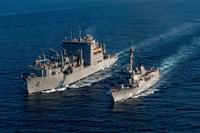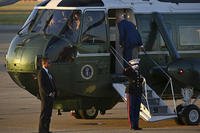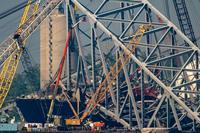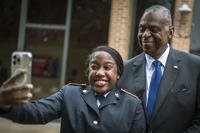Here's an interesting story we're running at Military.com today. The use of UAVs on an increasing number of Naval platforms is remarkable in its own right. But it seems to me also that as this continues, the size of the platform from which UAVs operate could get smaller and smaller.
Guided-missile destroyer USS Oscar Austin (DDG 79), completed a robust testing phase of the ScanEagle, unmanned aerial vehicle (UAV), Nov. 17, en route to the Central Command area of operations as part of the ongoing rotation to support Maritime Security Operations.
"ScanEagle is an incredible asset not only for this ship, but the Navy too," said Oscar Austin's Commanding Officer, Cmdr. Eric Weilenman. "It gives me great [subject awareness] on what's around the ship and allows me to keep my visit, board, search, and seizure teams aware of their environment because the UAV provides positive identification on vessels of interest, which allows me to pass accurate security information to my Sailors as they prepare to board."
While in flight, ScanEagle provides live, high-quality video that helps develop and maintain a Recognized Maritime Picture and further enhances Maritime Domain Awareness.
It seems to me that you could walk down this logical path to the Army's Future Combat Systems concept. As the launch and recovery methodologies get more deployable, it's not too much of a stretch to imagine tanks and APCs carrying their own UAVs to survey the road ahead and recover back to the tank.
Contractors operate the UAV while Navy intelligence specialists and flight deck crew work side-by-side with the civilians.
"ScanEagle is launched by a pneumatic wedge catapult launcher and flies off pre-programmed computerized files or operators (like myself) to initiate the mission," said Hamann.
"When retrieved, we use what is called a 'Skyhook' system, where the UAV catches a rope that is hanging from a 50-foot high pole," Hamann added.
The last ship that deployed with ScanEagle, USS Carter Hall (LSD 50), completed 19 missions and 933 flight hours.
The software and back-end technology are there, but maybe it's the bandwidth and launch/recovery phase that are still the sticking points (and money and complexity, ya ya ya...).
(Gouge: ED)
Photo from Boeing
-- Christian








